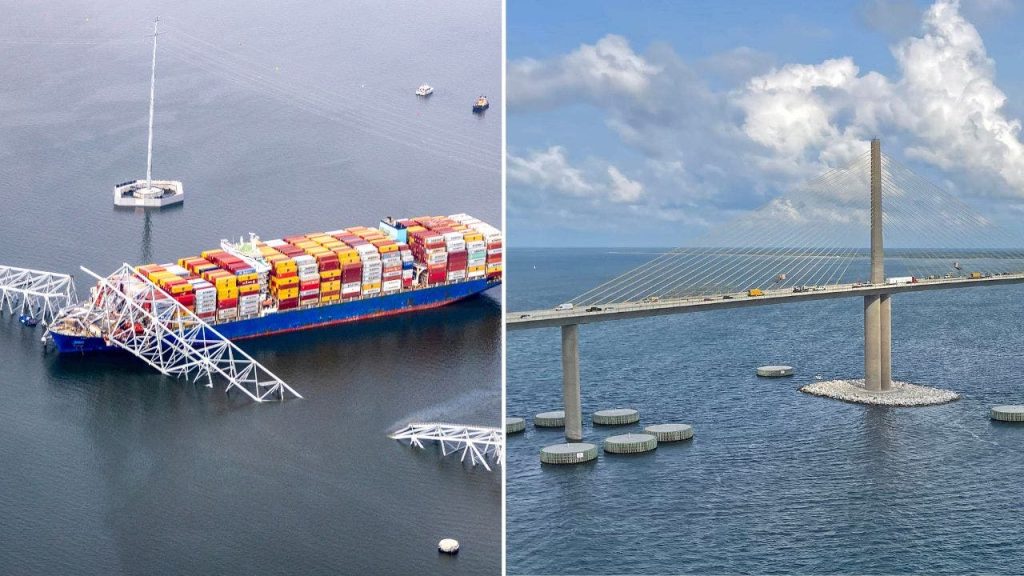The collapse of the Francis Scott Key Bridge in Baltimore has raised concerns about the safety and protective mechanisms in place to prevent such disasters. It is still unclear what caused a massive cargo vessel to strike a critical part of the bridge, resulting in the loss of six lives. Reports have indicated that from 1960 to 2015, there were 35 major bridge collapses worldwide due to ship or barge collisions, with a total of 342 people killed. In 1980, a freighter collided with the Sunshine Skyway Bridge in Florida, resulting in the deaths of at least 35 people. Following this tragedy, protective measures were put in place to safeguard against future incidents.
In the case of the Sunshine Skyway Bridge, a replacement bridge was constructed with protective barriers and a fendering system to shield its piers from potential collisions. The shipping lanes were also widened to ensure the safety of vessels passing through the area. On the day before the new bridge was set to open, protective bumpers were tested when a shrimp boat collided with them. The bumpers sustained minor damage, but the bridge remained unharmed. The incident highlighted the importance of protective measures in preventing catastrophic events.
The Francis Scott Key Bridge, built in 1977, does not seem to have any protective barriers in place around its piers. The lack of protective measures raises questions about whether additional safety features could have prevented the recent collapse. An expert noted that the size and weight of the cargo vessel involved in the incident may have rendered traditional protective systems ineffective. Suggestions were made for more robust protective measures, such as creating an island around the piers, but such solutions can be costly and challenging to implement after a bridge has been constructed.
Jennifer Homendy, the chair of the National Transportation Safety Board, highlighted the importance of investigating the structure of the bridge and the presence of protective structures in the aftermath of the collapse. The investigation will assess how the bridge was constructed and evaluate the need for safety improvements to prevent similar incidents in the future. The tragic loss of six construction workers who were on the bridge at the time of the collapse underscores the urgency of enhancing safety measures to protect workers and bridge users.
Experts have suggested more cost-effective systems, such as trip wires and warning sensors, to alert bridge users and authorities of potential dangers. These remote sensing approaches could provide early warnings of disasters, allowing for timely evacuation and closure of bridges in emergency situations. The use of advanced warning systems could potentially prevent accidents like the collapse of the Francis Scott Key Bridge in Baltimore. As investigations continue into the cause of the collapse and the effectiveness of existing safety measures, there is a growing emphasis on the importance of implementing robust protective mechanisms to safeguard against future disasters.


